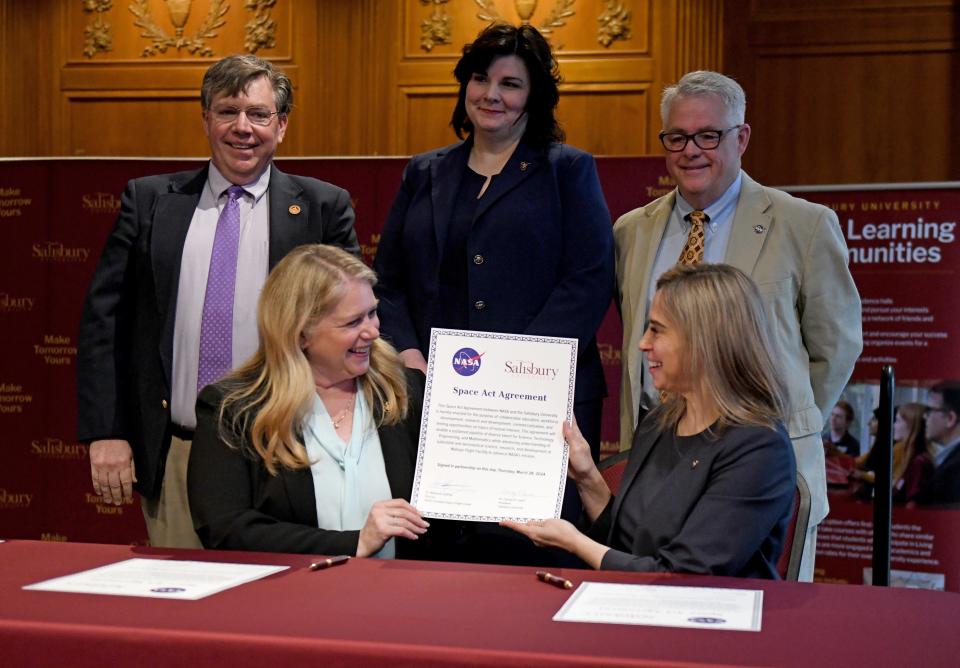Salisbury University, NASA launch milestone education agreement to increase opportunities
On Thursday, Salisbury University and NASA doubled down on their partnership by signing a landmark agreement that will provide the next generation of employees through coursework and professional development.
As part of the announcement, university officials and representatives from NASA's Goddard Space Center and Wallops Flight Facility discussed a curriculum aimed at training the next generation of the employees "at the forefront of space exploration."
On hand for the event were university President Carolyn Ringer Lepre; Dr. Laurie Couch, university provost and senior vice president of academic affairs; Dr. Michael Scott, dean of the university's Richard A. Henson School of Science and Technology; Dr. Makenzie Lystrup, director of NASA’s Goddard Space Flight Center; and David Pierce, director of the Wallops Flight Facility.
"This occasion marks a momentous agreement between our institution and NASA Wallops, one that will underscore the spirit of collaboration and innovation that define both our organizations," Lepre said. "NASA Wallops has long been at the forefront of space exploration, pioneering breakthroughs that have expanded our understanding of the universe and inspired generations of scientists, engineers and dreamers."
More on recent launches Rocket Lab successfully launches Electron rocket from Wallops Flight Facility
A history of collaboration between NASA, Salisbury University

This is far from the first foray into a partnership between the two institutions as in 2021, eight students designed and built a ThinSat that was launched from Wallops Flight Facility for delivery to the International Space Station. The satellite relayed information to help determine thunderstorm impacts on the magnetic field in the lower thermosphere and to better identify certain types of weather phenomena.
Past studies involving Salisbury University students investigated the impacts of microgravity on metastasizing cancer cells.
"Our operations are growing at Wallops, underscoring the need for an innovative, skilled workforce to advance science and technology mission. This agreement is helping us fill a critical workforce need to propel us into the future," Pierce said.
Wallops Virginia Spaceport Authority and Wallops Flight Facility have also hosted interns from the university in other career fields such as public relations and product creation as others have designed the mission patch worn by astronauts.
Students have also heard from those behind some of largest projects at the flight facility, including astronaut Richard Arnold II, the Hubble Space Telescope Mission deputy project manager. Others that have spoken to students include Jim Jeletic and Dr. J. Tanner Slagel, research computer scientist at NASA's Langley Research Center.
More on past STEM programs LEGO adds to mission as Virginia Space Flight Academy doubles down on STEM education
"Our success at NASA, now and in the future, depends on a dynamic network of partnerships focused on our mission operations and growing the next generation of innovators. NASA's partnership with the university expands our workforce development ecosystem and provides students with real-world experience in critical aerospace careers," Lystrup said.
This article originally appeared on Salisbury Daily Times: NASA, Salisbury enter into pioneering education agreement

